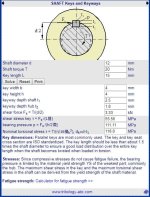ElectricGod
10 MW
dead thread
ElectricGod said:AP 12090
Battery amps: 3.2A
Phase amps: 22A
ElectricGod said:The AP motor has 3X MORE phase current under no load than the RV-120-regular. That doesn't sound like it's "better" to me. My test was simple. Connect the motor to the controller, crank the throttle to WOT and measure the phase current. I tried all 3 phases on both motors. They were consistent across their phases and always the AP 12090 had 3X more phase current under no load. How is that better?
ElectricGod said:1. Outrunners are generally wired delta. I have yet to see one ever wired WYE. I have yet to see an inrunner wired delta.
district9prawn said:I tried pwm frequency from 5 to 30khz in foc. At 30khz phase current was 6a. Dropping the switching frequency resulted in higher measured motor current. At 5khz it was over 15a. In trap mode it was about 7a. Controller was a vesc.
ElectricGod said:Help me understand this: Vout always equals Vin at any RPM or duty cycle. There's no high current voltage regulator or step down circuit in a controller. The mosfets either apply full battery voltage to the phases or they don't. Speed and torque control is not done by adjusting the voltage, but by adjusting the PWM or the frequency of the current sinusoid going to the motor. This is typical Class D amplifier stuff.
ElectricGod said:Phase currents and battery currents as you just saw can be wildly different. I don't think any conservation of energy laws are broken at all. It's just the nature of inductors and iron and magnets interacting that make it "look" like this is the case. Also, there are many examples to be found of real devices that collect the BEMF and reuse it in interesting ways that recovers that energy. The cycling effects of rapidly reversing magnetic fields, collapsing magnetic fields, BEMF, magnets passing by inductors, and other elements create these interesting effects. I agree it is interesting and somewhat mysterious, but there's not magical energy in the phases.
ElectricGod said:In conversing with Revolt, they won't tell me anything other than what they post on their web site. I think they really dislike me scrutinizing their motors, but won't say anything. You'd think they would want to brag about their motors...at least the Pro and E...nothing. They get annoyed when I tell them what I have found in the motors. They think their motors are perfect or something as is.

